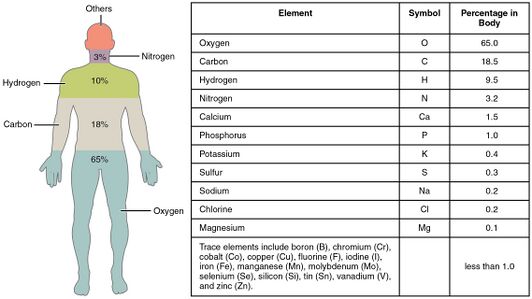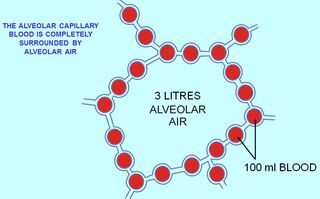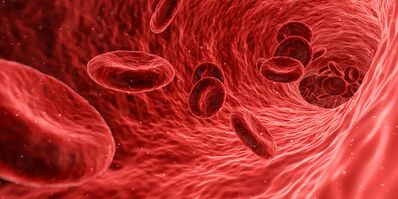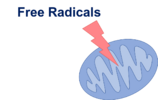Oxygen: Difference between revisions
No edit summary |
No edit summary |
||
| (13 intermediate revisions by one other user not shown) | |||
| Line 1: | Line 1: | ||
<div class="editorbox"> | <div class="editorbox"> | ||
'''Original Editor '''- [[User: | '''Original Editor '''- [[User:Lucinda hampton|lucinda hampton]] | ||
'''Top Contributors''' - {{Special:Contributors/{{FULLPAGENAME}}}} | '''Top Contributors''' - {{Special:Contributors/{{FULLPAGENAME}}}} | ||
</div> | </div> | ||
== Introduction == | == Introduction == | ||
Oxygen is a vital gas, responsible for life on earth. It generates energy and supports the life of all the living organisms. In order to survive, all of our cells need oxygen. | [[File:Elements of the Human Body-01.jpeg|right|frameless|532x532px]] | ||
Oxygen is a vital gas, responsible for life on earth. It generates energy and supports the life of almost all the living organisms. In order to survive, all of our cells need oxygen. Three processes are essential for the transfer of oxygen from the outside air to the blood flowing through the lungs: [[Ventilation and Weaning|ventilation]], diffusion, and perfusion | |||
# Ventilation is the process by which air moves in and out of the [[Lung Anatomy|lung]]<nowiki/>s. See also [[Respiratory System|respiratory system]] | |||
# Diffusion is the spontaneous movement of gases, without the use of any energy or effort by the body, between the [[alveoli]] and the [[capillaries]] in the lungs. | |||
# Perfusion is the process by which the [[Cardiovascular System|cardiovascular system]] pumps [[Blood Physiology|blood]] throughout the lungs<ref name=":3">MSD manual [https://www.msdmanuals.com/en-au/home/lung-and-airway-disorders/biology-of-the-lungs-and-airways/exchanging-oxygen-and-carbon-dioxide Exchanging Oxygen and Carbon Dioxide] Available: https://www.msdmanuals.com/en-au/home/lung-and-airway-disorders/biology-of-the-lungs-and-airways/exchanging-oxygen-and-carbon-dioxide<nowiki/>(accessed 23.12.2021)</ref>.<ref name=":1">Oxygen review Human body Available: https://www.oxygen-review.com/human-body.html<nowiki/>(accessed 22.12.2021)</ref>.<ref name=":0">Rhodes CE, Varacallo M. [https://www.statpearls.com/articlelibrary/viewarticle/26494/ Physiology, oxygen transport.] InStatPearls [Internet] 2020 Sep 13. StatPearls Publishing. Available: https://www.statpearls.com/articlelibrary/viewarticle/26494/<nowiki/>(accessed 22.12.2021)</ref><ref name=":2">Medical daily How humans use oxygen Available: https://www.medicaldaily.com/how-oxygen-used-human-body-complex-journey-explained-415657 (accessed 23.12.2021)</ref>. | |||
Image 1: The main elements that compose the human body, by mass percent, are shown from most abundant to least abundant element. The atomic fractions (fractions of atoms) are different due to differing atomic weights. As in water, oxygen contributes the most mass, but hydrogen is the most common atom. | |||
The | |||
== Oxygen Transport == | == Oxygen Transport == | ||
Oxygen is carried in the blood in two forms. The vast majority of oxygen in the blood is bound to hemoglobin within red blood cells, while a small amount of oxygen is physically dissolved in the plasma. | [[File:Alveolus.jpeg|right|frameless|320x320px]] | ||
Oxygen is carried in the blood in two forms. The vast majority of oxygen in the blood is bound to hemoglobin within red blood cells, while a small amount of oxygen is physically dissolved in the plasma. | |||
Image 2: A diagrammatic histological cross-section through a portion of lung tissue showing a normally inflated alveolus (at the end of a normal exhalation), and its walls containing the pulmonary capillaries (shown in cross-section). The pulmonary capillary blood is completely surrounded by alveolar air. | |||
* Inhaled oxygen enters the lungs and reaches the alveoli. The layers of cells lining the alveoli and the surrounding capillaries are each only one cell thick and are in very close contact with each other. This barrier between air and blood averages about 1 micron (<sup>1</sup>/<sub>10,000</sub> of a centimeter, or 0.000039 inch) in thickness. Oxygen passes quickly through this air-blood barrier into the blood in the capillaries. | |||
* The heme group of hemoglobin binds oxygen (changing haemoglobin’s color from bluish red to bright red). | |||
* Oxygenated blood travels from the lungs through the pulmonary veins and into the [[Left Ventricle Heart|left side of the heart]], which pumps the blood to the rest of the body<ref name=":3" /> | |||
* O2 is handed-off to an [[Enzymes|enzyme]] (monooxygenase) that also has an active site with an atom of iron. Monooxygenases are enzymes that catalyze the insertion of a single oxygen atom from O(2) into an organic substrate.<ref name=":1" />.<ref name=":0" /><ref name=":2" />. | |||
* The regulation of unloading of oxygen from hemoglobin at target tissues is controlled by several factors, including oxygen concentration gradient, temperature and pH. | |||
<ref name=":0" />. | |||
== Hemoglobin (Hgb or Hb) | == Hemoglobin (Hgb or Hb) == | ||
Hemoglobin (Hgb or Hb) is the primary carrier of oxygen in humans. Approximately 98% of total oxygen transported in the blood is bound to hemoglobin, while only 2% is dissolved directly in plasma. Hemoglobin is a metalloprotein with four subunits composed of an iron-containing heme group attached to a globin polypeptide chain. One molecule of oxygen can bind to the iron atom of a heme group, giving each hemoglobin the ability to transport four oxygen molecules. | [[File:Red Blood Cell.jpeg|right|frameless|398x398px]] | ||
Hemoglobin (Hgb or Hb) is the primary carrier of oxygen in humans. Approximately 98% of total oxygen transported in the blood is bound to hemoglobin, while only 2% is dissolved directly in plasma. | |||
Image 3: Human red blood cells. | |||
# Hemoglobin is a metalloprotein with four subunits composed of an iron-containing heme group attached to a globin polypeptide chain. | |||
# One molecule of oxygen can bind to the iron atom of a heme group, giving each hemoglobin the ability to transport four oxygen molecules. | |||
== Molecular oxygen, O2 == | == Molecular oxygen, O2 == | ||
Molecular oxygen, O2, is essential for cellular respiration in all aerobic organisms. Oxygen is used as an electron acceptor in [[mitochondria]] to generate chemical energy. For more on cellular respiration see [[Adenosine triphosphate (ATP)|ATP]].<ref name=":1" /> | Molecular oxygen, O2, is essential for cellular respiration in all aerobic organisms. Oxygen is used as an electron acceptor in [[mitochondria]] to generate chemical energy. For more on cellular respiration see [[Adenosine triphosphate (ATP)|ATP]].<ref name=":1" /> | ||
== Pathophysiology == | |||
The primary function of the cardiorespiratory system is to ensure that all metabolically active tissues are adequately oxygenated at all times. [[Hypoxaemia|Hypoxemia]] and hypoxia may result when these systems fail and represent major immediate threats to [[Vital Organs|organ function]] and patient survival.<ref name=":0" /> | |||
The oxygenation process can be categorized into three stages: oxygenation, oxygen delivery, and oxygen consumption. | |||
# Respiratory failure will result in a decreased oxygenation of blood. eg [[emphysema]], [[pneumothorax]] | |||
# Oxygen delivery, the rate of oxygen transport from the lungs to the microcirculation, is dependent on cardiac output and arterial oxygen content. Oxygen delivery fails in eg [[Myocardial Infarction|Myocardial Infarct]] | |||
# Oxygen demand is a product of the metabolic state of the tissues. eg in [[Cancer Cachexia|cancer cachexia]]<ref name=":0" /> | |||
People living with a [[Chronic Obstructive Pulmonary Disease Rehabilitation Class|chronic lung disease]] who have low levels of oxygen in their blood often experience symptoms of fatigue and breathlessness. [[Oxygen Therapy at Home|Oxygen therapy]] helps increase the amount of oxygen in their blood to assist them by having more energy for [[Activities of Daily Living|ADLs]].<ref>Lunf Foundation Australia [https://lungfoundation.com.au/patients-carers/after-your-diagnosis-title/oxygen/ Oxygen] Available: https://lungfoundation.com.au/patients-carers/after-your-diagnosis-title/oxygen/<nowiki/>(accessed 23.12.2021)</ref> | |||
== Free Radicals == | |||
[[File:Free radical damage.png|right|frameless|158x158px]] | |||
Oxygen supports our life oxidising food to create energy and heat for our bodies. Certain types of altered oxygen molecules called "[[Free Radicals]]" which are ever-present in our bodies and will damage our own cells and even our DNA, causing degeneration and diseases such as cancer. | |||
== References == | == References == | ||
<references /> | <references /> | ||
[[Category:Physiology]] | |||
[[Category:Respiratory]] | |||
Latest revision as of 18:14, 17 January 2023
Original Editor - lucinda hampton
Top Contributors - Lucinda hampton and Aminat Abolade
Introduction[edit | edit source]
Oxygen is a vital gas, responsible for life on earth. It generates energy and supports the life of almost all the living organisms. In order to survive, all of our cells need oxygen. Three processes are essential for the transfer of oxygen from the outside air to the blood flowing through the lungs: ventilation, diffusion, and perfusion
- Ventilation is the process by which air moves in and out of the lungs. See also respiratory system
- Diffusion is the spontaneous movement of gases, without the use of any energy or effort by the body, between the alveoli and the capillaries in the lungs.
- Perfusion is the process by which the cardiovascular system pumps blood throughout the lungs[1].[2].[3][4].
Image 1: The main elements that compose the human body, by mass percent, are shown from most abundant to least abundant element. The atomic fractions (fractions of atoms) are different due to differing atomic weights. As in water, oxygen contributes the most mass, but hydrogen is the most common atom.
Oxygen Transport[edit | edit source]
Oxygen is carried in the blood in two forms. The vast majority of oxygen in the blood is bound to hemoglobin within red blood cells, while a small amount of oxygen is physically dissolved in the plasma.
Image 2: A diagrammatic histological cross-section through a portion of lung tissue showing a normally inflated alveolus (at the end of a normal exhalation), and its walls containing the pulmonary capillaries (shown in cross-section). The pulmonary capillary blood is completely surrounded by alveolar air.
- Inhaled oxygen enters the lungs and reaches the alveoli. The layers of cells lining the alveoli and the surrounding capillaries are each only one cell thick and are in very close contact with each other. This barrier between air and blood averages about 1 micron (1/10,000 of a centimeter, or 0.000039 inch) in thickness. Oxygen passes quickly through this air-blood barrier into the blood in the capillaries.
- The heme group of hemoglobin binds oxygen (changing haemoglobin’s color from bluish red to bright red).
- Oxygenated blood travels from the lungs through the pulmonary veins and into the left side of the heart, which pumps the blood to the rest of the body[1]
- O2 is handed-off to an enzyme (monooxygenase) that also has an active site with an atom of iron. Monooxygenases are enzymes that catalyze the insertion of a single oxygen atom from O(2) into an organic substrate.[2].[3][4].
- The regulation of unloading of oxygen from hemoglobin at target tissues is controlled by several factors, including oxygen concentration gradient, temperature and pH.
[3].
Hemoglobin (Hgb or Hb)[edit | edit source]
Hemoglobin (Hgb or Hb) is the primary carrier of oxygen in humans. Approximately 98% of total oxygen transported in the blood is bound to hemoglobin, while only 2% is dissolved directly in plasma.
Image 3: Human red blood cells.
- Hemoglobin is a metalloprotein with four subunits composed of an iron-containing heme group attached to a globin polypeptide chain.
- One molecule of oxygen can bind to the iron atom of a heme group, giving each hemoglobin the ability to transport four oxygen molecules.
Molecular oxygen, O2[edit | edit source]
Molecular oxygen, O2, is essential for cellular respiration in all aerobic organisms. Oxygen is used as an electron acceptor in mitochondria to generate chemical energy. For more on cellular respiration see ATP.[2]
Pathophysiology[edit | edit source]
The primary function of the cardiorespiratory system is to ensure that all metabolically active tissues are adequately oxygenated at all times. Hypoxemia and hypoxia may result when these systems fail and represent major immediate threats to organ function and patient survival.[3]
The oxygenation process can be categorized into three stages: oxygenation, oxygen delivery, and oxygen consumption.
- Respiratory failure will result in a decreased oxygenation of blood. eg emphysema, pneumothorax
- Oxygen delivery, the rate of oxygen transport from the lungs to the microcirculation, is dependent on cardiac output and arterial oxygen content. Oxygen delivery fails in eg Myocardial Infarct
- Oxygen demand is a product of the metabolic state of the tissues. eg in cancer cachexia[3]
People living with a chronic lung disease who have low levels of oxygen in their blood often experience symptoms of fatigue and breathlessness. Oxygen therapy helps increase the amount of oxygen in their blood to assist them by having more energy for ADLs.[5]
Free Radicals[edit | edit source]
Oxygen supports our life oxidising food to create energy and heat for our bodies. Certain types of altered oxygen molecules called "Free Radicals" which are ever-present in our bodies and will damage our own cells and even our DNA, causing degeneration and diseases such as cancer.
References[edit | edit source]
- ↑ 1.0 1.1 MSD manual Exchanging Oxygen and Carbon Dioxide Available: https://www.msdmanuals.com/en-au/home/lung-and-airway-disorders/biology-of-the-lungs-and-airways/exchanging-oxygen-and-carbon-dioxide(accessed 23.12.2021)
- ↑ 2.0 2.1 2.2 Oxygen review Human body Available: https://www.oxygen-review.com/human-body.html(accessed 22.12.2021)
- ↑ 3.0 3.1 3.2 3.3 3.4 Rhodes CE, Varacallo M. Physiology, oxygen transport. InStatPearls [Internet] 2020 Sep 13. StatPearls Publishing. Available: https://www.statpearls.com/articlelibrary/viewarticle/26494/(accessed 22.12.2021)
- ↑ 4.0 4.1 Medical daily How humans use oxygen Available: https://www.medicaldaily.com/how-oxygen-used-human-body-complex-journey-explained-415657 (accessed 23.12.2021)
- ↑ Lunf Foundation Australia Oxygen Available: https://lungfoundation.com.au/patients-carers/after-your-diagnosis-title/oxygen/(accessed 23.12.2021)










